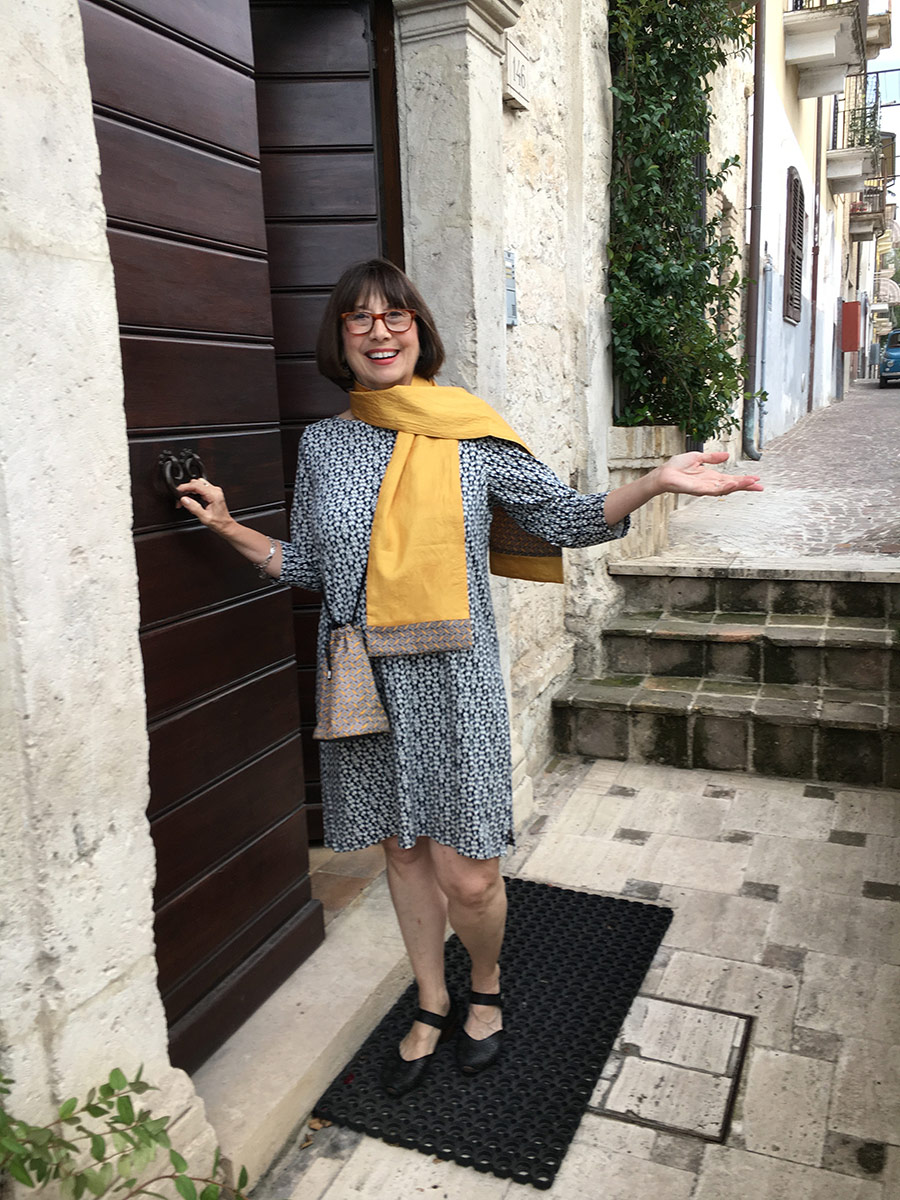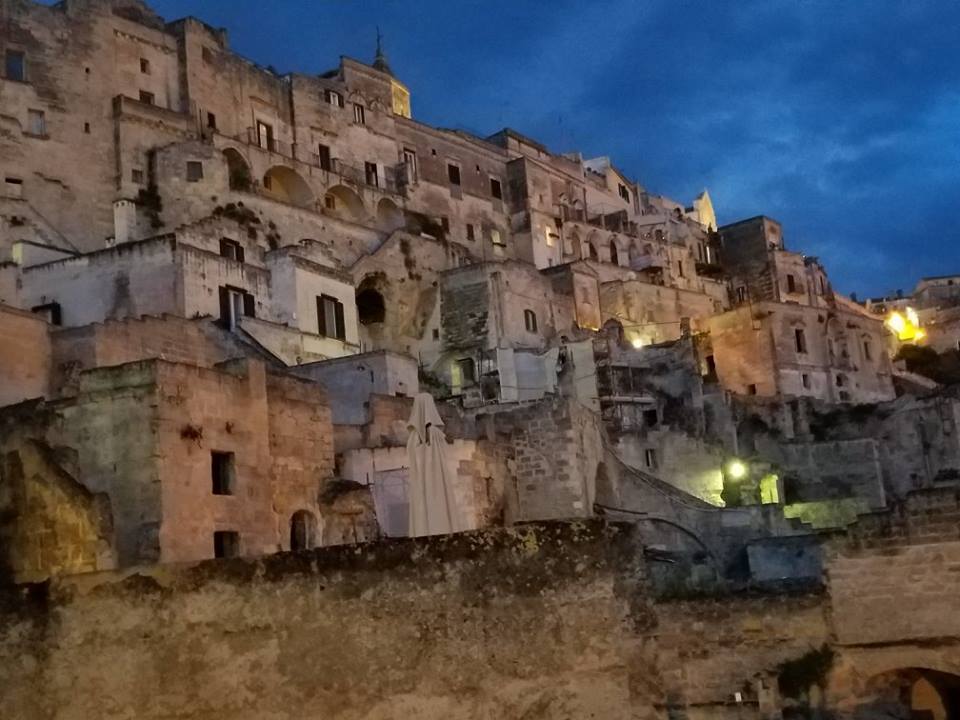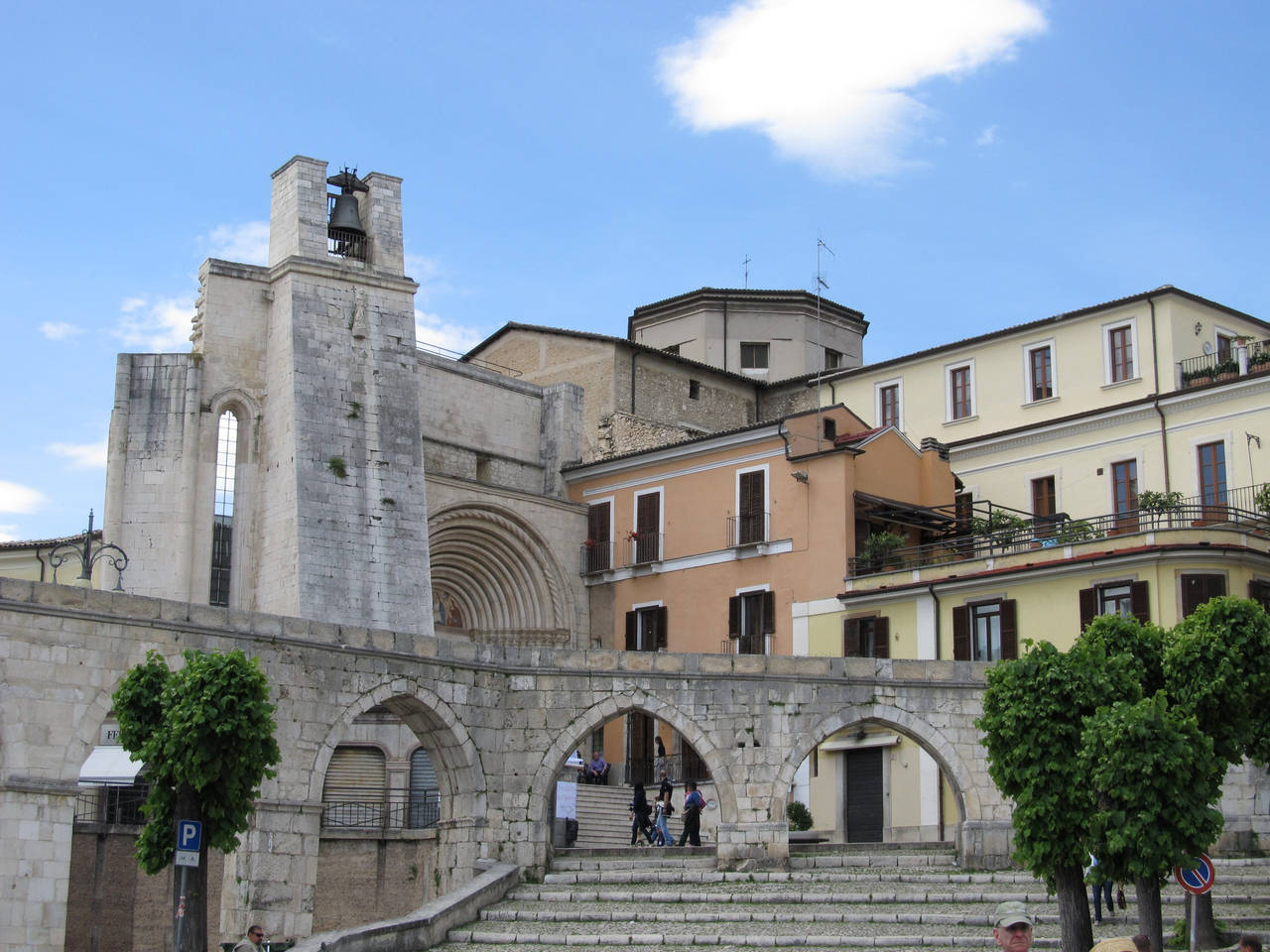His love for glasswork and his desire to guarantee the Murano glass tradition led him, in his retirement, to teach future generations of those who share this passion, including in the United States at nonprofit glass centers such as Public Glass in San Francisco and Chicago Hot Glass. — The GLASS Quarterly Hot Sheet, December 21, 2010
You never know who you’re going to meet when you go on a trip abroad. This past November, when I went to Umbria with Dream of Italy’s Umbrian Harvest Tour, I lived amongst a dozen interesting, funny and smart people for a week. I saw two of them — Rosemarie and Valerie — for dinner in New York a few weeks ago. And one couple, Lee and Tarie Harris, are among those I also know I’ll stay in touch with. The very first night, Lee regaled us all, as we sat around the fireplace waiting for dinner, with the prior week’s experiences, among them a three-day trip to Murano to visit his glass-blowing mentor, Elio Quarisa, who was very ill with cancer.
None of us had ever met a glass blower before. A PBS special on Dale Chihuly was about the closest any of us had gotten. But Lee had studied with a “first master” of the Venetian glass school and the love he had for this man and his art and the people who are involved in this incredible industry was evident as he talked into the night.
A month after we returned home, we got an e-mail from Lee saying that his beloved mentor had finally
succumbed to the disease. He was distraught, of course, but grateful for the days he and his wife had spent with Elio and his wife, Adriana. He wanted to get the story out about Elio, his work and the scholarship fund that has been set up by The Studio at the Corning Museum of Glass, where Elio taught in his retirement. I hope you enjoy reading about this amazing man and his efforts to keep an ancient art alive. Thanks, Lee!
“I was incredibly honored not only to be in a workshop with the Venetian Goblet Maestro Elio Quarisa, but to become great friends with him, from the very first day of the workshop at my home glass studio, Chicago Hot Glass, about seven years ago.

Elio and Pino Signoretti, the greatest glass sculptor ever — and one of Chihuly's most treasured Muranese glass artists
“Because of his stature as a living legend I, as well as other top glass artists in the U.S., found ourselves reserved in his presence, to say the least. At the same time, from the first moments of assisting Elio, his quiet reassurance and sincere gestures of kindness made these fears melt away, and in their place came admiration and the sheer joy of being with him.
“With Elio’s awesome good looks, poise and wonderful carriage, he confidently sculpted exceptionally thin and delicate glass into amazing dragon and “delfino” (dolphin) stem creations. You realized quickly that you were in the presence of someone of supreme confidence that only a lifetime of working with glass and the hands of God could produce.
“After only a few weeks of becoming friends with Elio, I and my wife Tarie had the additional gift of becoming friends with his wonderful and beautiful wife, Adriana. I told Elio that he was actually the Marcello Mastroianni of glass and, were it not for the fact that Adriana had frosted hair, I would have called her the Sophia Loren.
“When you worked with Elio, rushing to bring him a bit of hot glass to finish a complex, delicate goblet, he would look up from the bench, with his wonderful smile, and say, in his broken English, ‘easy, easy…ELEGANTE, slow, breathe’ — in effect, reassuring both the advanced glass artist or neophyte to relax, enjoy and not worry. ‘It’s only glass,’ he would say.
“After these years have passed and now that he has left us, I must admit that if I ever really thought about the
stature of this remarkable glass legend, I might not have experienced the depth and majesty of this amazing man.
“When Tarie I stayed with Elio and Adriana at their wonderful home on the island of Murano, we would walk along the canals, and we would constantly hear people calling out, ‘Ciao, Elio.’ And without even turning around, Elio would call back, ‘Ciao Rosa,’ or whoever it was, knowing everyone by their voice.
“He was Murano — a time and place where neighbors came out early in the morning, sweeping their front streets, or trimming their flowers in the planters of their front windows.
“Seeing this gentle Maestro, one would never know that he had actually gone to work in the glass factory at nine years old during World War II, when his father died and he needed to help support his mother and sister. At an early age, he was recognized for his energy and amazing glass talents. By the time he was 21, he was regarded as a ‘Primo Maestro,’ the highest level of glass artist in what has been the undisputed glass center for 1,200 years.
“After working with several different famous glass studios in Murano, he worked for nearly 30 years at the exclusive — and oldest — furnace in Murano: Barovier & Toso. Jacobellus Barovier was a French chemist, who started the company in 1295. His secret glass coloration formulas are still held by this glass studio, and the company is still held by the Toso family. Elio became their chief of design, in itself an amazing accomplishment.
“I visited with Elio in November, just a month before he died, hoping that his battle with cancer would end differently than it did. I am grateful that for those amazing three days, not only did I find Elio mobile, but could hardly keep up with his energy. One day he and Adriana had planned to have his cousin and his wife meet the four of us at the ‘vaporetta’ (water taxi) to get their cars at the Venice airport parking garage, to tour part of the mainland and have a wonderful lunch and dinner. It was about a 12-hour day, and though Elio was experiencing intense chemical poisons to kill the cancer, he never complained and hardly seemed tired.
“Those three days will always be something that makes me smile, because I was with ‘my Elio’ at his home, finding the embracing residents of Murano, whether garbage collector or fellow maestri, all happy, as always, to see Elio. And, as usual, Elio would stop and ask them how they were, and would want to know how their family and friends were…to catch up. He would listen and look into their eyes with each word they spoke.
“Of course the people of Murano — many of whom were his artistic contemporaries, legends, suppliers and shop owners who had the benefit of being a part of their lives and their families — also felt he was ‘their Elio.’ I can only smile with the one thought, that perhaps he is now God’s Elio, which I am jealous of.
“So, when I email or speak with other Maestro friends, or glass suppliers and friends in Murano and Venice, when we say hi, or goodbye, we say ‘Ciao.’ To me, it has the same meaning as ‘Shalom,’ because when Elio said Ciao, he meant take care of yourself, because I care about you and your well-being and want you to be happy.
“Ciao, Elio. Shalom.”
Lee wanted me to tell you about a wonderful project being organized by the Corning Glassworks:
Elio, after he retired, came to the U.S. to be sure that anyone interested in Classic Goblet creation could learn from, study with or simply watch the Maestro. It was critical for him that his love of Muranese Goblet design would live on. And so The Elio Quarisa Scholarship Fund has been created by Corning Glass. Each year, Corning hopes to have Elio’s legend live on by awarding scholarship(s) to students wishing to learn and develop classic Venetian Goblet creation.
For more information, contact Amy Schwartz at 607.974.8914 or thestudio@cmog.org. To donate by check, please make checks payable to: The Corning Museum of Glass (designate which scholarship fund in memo/note). Mail donations to: The Corning Museum of Glass, Development Office, One Museum Way, Corning, NY 14830.
Buon viaggio!

Linda Dini Jenkins is a card-carrying Italophile, travel planner, freelance writer, and amateur photographer. Travel is her passion, so writing about her travels just comes naturally. She hopes all her travelers find a way to express their joys, surprises, and fears as they travel and gives every traveler a nifty journal to help smooth the way. Learn more…






